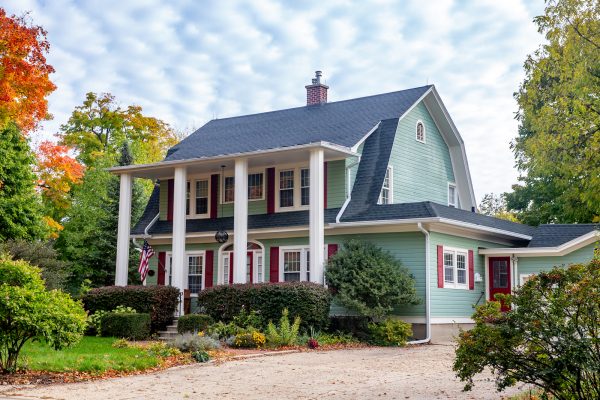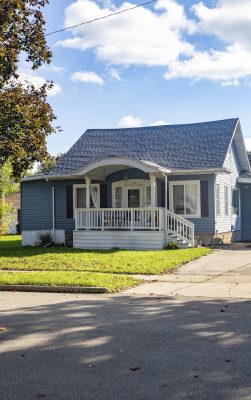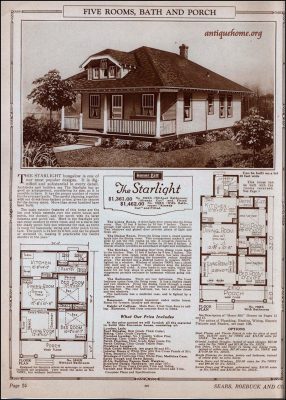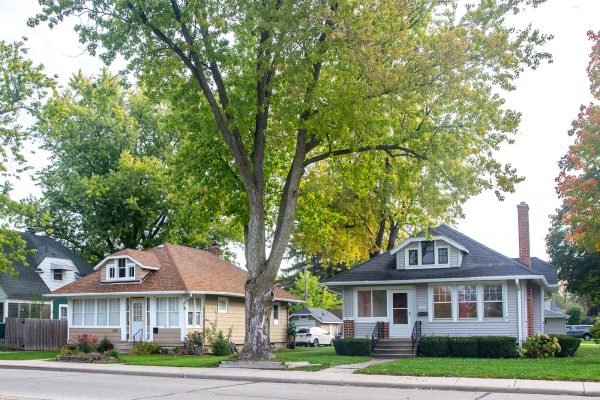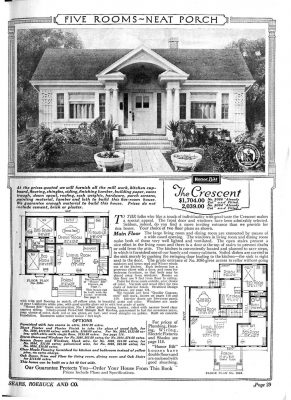By Anne Morrissy | Photos as noted
Imagine it is the 1920s and you live in Lake Geneva. Heading to your mailbox, you find the newest Sears Modern Homes catalog, a 60-plus-page catalog featuring illustrations, plans and specs for homes that you can order directly from the famous, Chicago-based catalog company. Flipping through the pages, you find a model you love, with a name like the Sunbeam, the Fairy or the Rembrandt. Several weeks after placing the order, your new home begins to arrive, in thousands of pieces, via freight shipping on the railroad. Many homeowners then used these “kits” of pre- cut lumber, hardware, nails, asphalt shingles, flooring, decorative molding, bathroom and kitchen fixtures, light fixtures and other necessary homebuilding materials to build their homes themselves. Others hired professional builders to assemble them. Additional upgrades available through Sears offered the services of plumbers, electricians and other specialized tradesmen.
Between 1908 and 1940, Sears, Roebuck, & Co. sold between 70,000 and 75,000 homes in this manner. There is no complete record of where Sears houses were built, but Judith Chabot of searshouses.com works with a dedicated team of research historians. “Our research group finds houses through a number of methods,” Chabot explains.
“We peruse the real estate listings pretty much daily. We look through historic newspapers and mortgage and deed books in county land record offices for mentions of building permits, mortgages and foreclosures related to houses that were mortgaged through Sears (though not all were), andtrytotrackdownthehousesusing the legal descriptions given.” Using these methods, Chabot and her team have built a nationwide database of confirmed and suspected Sears houses. In Lake Geneva, they have identified 17 homes that are suspected Sears houses, and they have positively confirmed one more.
One place Chabot starts when looking for Sears houses is the exterior design of a house. Over more than three decades, Sears offered 447 different designs that ranged from elaborate, multi-story manses (The Magnolia, the Alhambra) to tiny cottages with no indoor plumbing marketed to vacationers (The Goldenrod). The vast majority of Sears homes, however, fell squarely in the middle — sturdy, stylish, moderately sized homes for middle-class buyers. These mid-priced models generally cost between $1,000- 2,500 new, and contained two or three bedrooms, a bathroom, a kitchen and a living/dining room, sometimes with an added porch, sunroom or reception room. The homes were petite by today’s standards, but very functional.
As of February 2023, Chabot’s team had identified more than 16,000 Sears houses or probable Sears houses still standing, in 48 of 50 states, as well as Canada and the District of Columbia. (By Chabot’s group’s calculations, Wisconsin ranks 12th in the country for number of Sears houses still standing. Ohio takes the top spot with more than 3,400.) It is a testament to the timeless design and well-built construction that so many of these Sears houses still exist today. “They are strong and well-constructed and of good design,” Chabot says. “Their designs were of the same kinds of styles as those that non-kit [builders] offered.”
Because of this, however, it can be very difficult to know if your house is a Sears house, or just a lookalike. “Sears houses make up at most about 2 percent of the housing stock of their era, so most houses in any neighborhood are not Sears houses,” Chabot points out. “They are pretty rare.”
The first step to finding out if your home is a Sears house, says Chabot, is to find its exact match among the historic Sears Modern Homes catalog images. (Chabot’s site features many of them.) “What we look for, from the outside, is that all of the doors and windows and bump-outs should be of the same number and location as what we see in the catalog image,” she explains. If there is any variation, then it is likely that your home is a lookalike.
“It’s not true to say that Sears kit houses were highly customizable,” she continues. “You could pay extra to customize some things, but most people were looking for the convenience and cost savings of using a plan that Sears already had.” Chabot says her group does field inquiries from homeowners who suspect they may live in a Sears house after completing this initial research, and her team can sometimes help with further authentication methods.
Today, more than 80-100 years after they were built, Sears houses continue to hold a certain fascination for historians and architecture buffs. “People are intrigued by Sears houses [for] the same reason that [our researchers] are drawn to them,” Chabot explains. “It’s an interesting part of Americana… to think that someone could order a house as a kit, from the same store that they used for buying their Easter bonnets, back-to-school dresses, hunting rifles, bicycles, tools, buggies, toys and rugs.”


